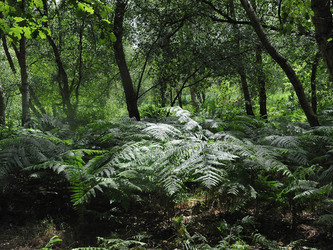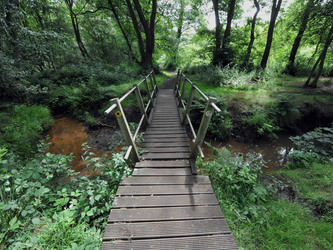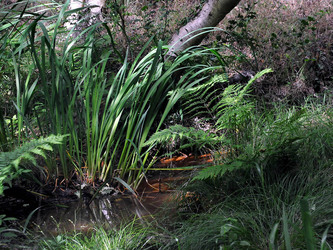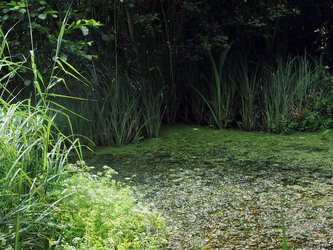Flitwick Moor
Description
A special preserved natural area owned and managed by the Wildlife Trust, Flitwick Moor was once used as a source of peat for the purification of natural gas in the Midlands, and was also where the naturally occurring iron rich spring water was bottled and sold as Flitwick water in Victorian times. The reddish iron rich deposits can still be seen today where the small bridge crosses the stream.
It is Bedfordshire’s most important wetland, a blend of fen, meadow, wet woodland and peaty soil, where you can see mosses, ferns and flowers, along with frogs, butterflies and other flora and fauna in a natural habitat. Folly Wood was added to the area in 2007.
It isn't the easiest of places to find, and I have a suspicion that those who maintain it, and those who love and appreciate it would want to keep it that way. If you want it for the right reasons, and are determined enough, you'll probably find it. I did. Please note that the paths vary in width and can be difficult because of protruding tree roots, and worse after rain.
Some history of the area
Flitwick Moor is highly regarded now as a nature reserve but in the 1850s a local man, Henry King Stevens, who had tenancy of a house and just under22 acres of land known as ‘The Folly’ promoted the spring water there as having wonderful medicinal properties and selling it at 2d a bottle. With eventual endorsement by the medical profession he turned this Flitwick Water into a commercial success, unfortunately dying before he could enjoy the benefits. The water was described as having a sherry colour because of the iron content, and said to be good for the blood.
London soft drink company R.W.White & Co purchased his estate and continued the business as the ‘Flitwick Chalybeate Company’, but demand gradually dropped off over time and the operation closed in the 1930s.
Testimonials
No testimonials yet.
Add a testimonial
Events
No events yet.













